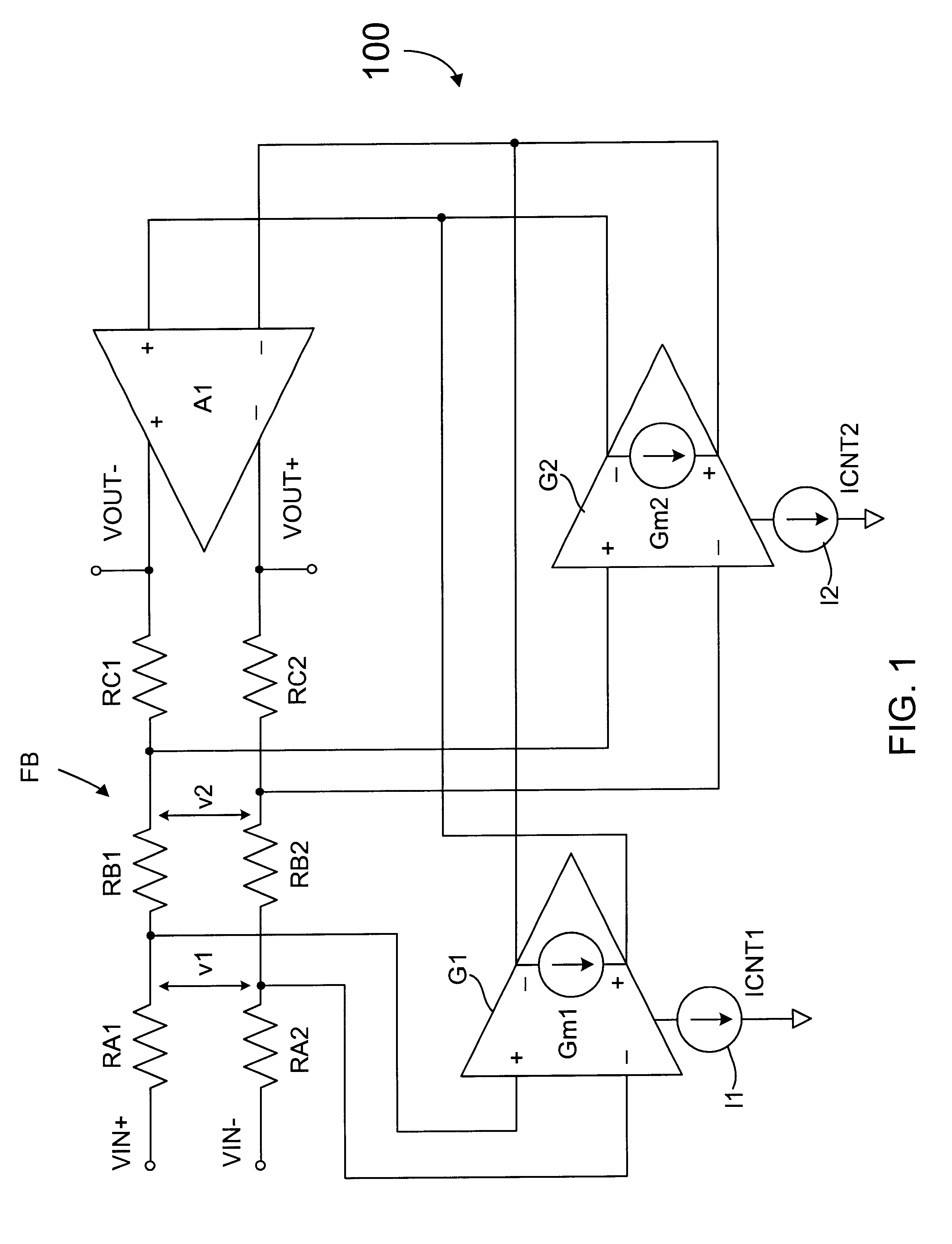Automatic gain control circuit with high linearity and monotonically correlated offset voltage
a gain control and offset voltage technology, applied in the direction of automatic tone/bandwidth control, gain control, amplifier modification to reduce non-linear distortion, etc., can solve the problems of inability to adjust the input signal, and inability to achieve correction, etc., to achieve excellent gain matching, low absolute gain tolerance, and optimization of noise and linearity performan
- Summary
- Abstract
- Description
- Claims
- Application Information
AI Technical Summary
Benefits of technology
Problems solved by technology
Method used
Image
Examples
Embodiment Construction
FIG. 1 is a schematic diagram of an exemplary AGC circuit 100 according to an embodiment of the present invention which exhibits high linearity and monotonically correlated offset voltage. The AGC circuit 100 includes six feedback resistors RA1, RA2, RB1, RB2, RC1 and RC2, a pair of transconductance amplifiers G1 and G2, a pair of control current sources I1 and I2, and a high gain transimpedance stage amplifier A1. The transconductance amplifiers G1 and G2 have transconductances Gm1 and Gm2, respectively. The control current sources I1 and I2 sink control currents ICNT1 and ICNT2, respectively. The AGC circuit 100 receives a differential input voltage VIN with positive and negative polarity signals VIN+ and VIN-, where VIN=(VIN+)-(VIN-). The AGC amplifier 201 provides a differential output voltage VOUT with positive and negative polarity signals VOUT+ and VOUT-, where VOUT=(VOUT+)-(VOUT-).
The input signals VIN+, VIN- are provided to respective ends of the two resistors RA1 and RA2. ...
PUM
 Login to View More
Login to View More Abstract
Description
Claims
Application Information
 Login to View More
Login to View More - R&D
- Intellectual Property
- Life Sciences
- Materials
- Tech Scout
- Unparalleled Data Quality
- Higher Quality Content
- 60% Fewer Hallucinations
Browse by: Latest US Patents, China's latest patents, Technical Efficacy Thesaurus, Application Domain, Technology Topic, Popular Technical Reports.
© 2025 PatSnap. All rights reserved.Legal|Privacy policy|Modern Slavery Act Transparency Statement|Sitemap|About US| Contact US: help@patsnap.com



